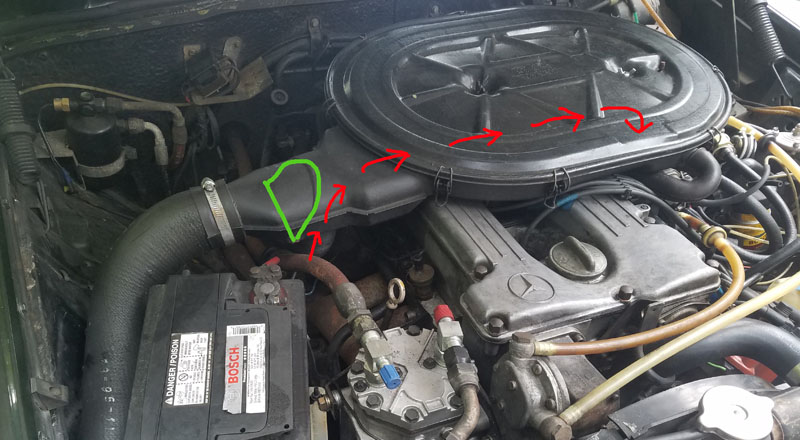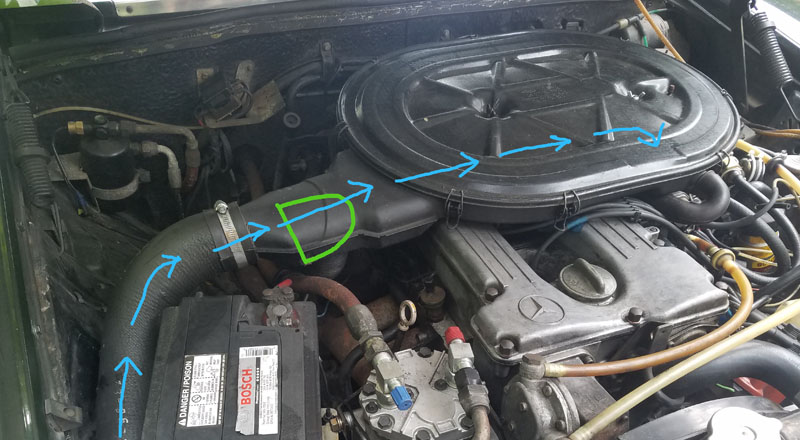 |
| Home |
Difference between your car's cold and hot air intake Your air cleaner is connected by some insulated hose to the cold air inlet. With time that hose deteriorates and people just remove it inadvertently taking away power from their cars. Why? Because cold air is much denser than hot air thus carrying more oxygen molecules to burn up in the engine. Most vintage cars have hot air raiser (green flap in the picture below rerouting air) which serves to warm up the air through the exhaust manifold that, in case it wasn't obvious, heats up very quickly - often within a few seconds after engine's start, it can be too hot to touch. The principle here is to warm up the carburetor and the intake manifold as quickly as possible. At this stage, the performance that comes from cold (thus denser air) is traded for warm air so the engine internals warm up enough to stop condensing the fuel/air mist on its internals because the mixture that drops out of evaporation is that much harder to ignite.
After the internals warm up enough, the heat raiser closes (the flap is control by some sort of thermostat) so only cold air is let into the intake.
The difference in performance? On a typical 70F (21C) day, air density is 1.2 kg/m3 but at 140F (60C) it's air density drops to 1.06 kg/m3. That's a 13% drop! Of course, you can't automatically make the assumption that your engine performance increases with cold air by that 13% as other factors come into play, but those figures should point out that if your air filter design calls for an air hose - it has its purpose. Likewise if your thermostat is broken or your airflap hangs loose, you might want to fix it bringing it back to the manufacturer's specs. |
| copyright 2019 by Patryk Rebisz |

